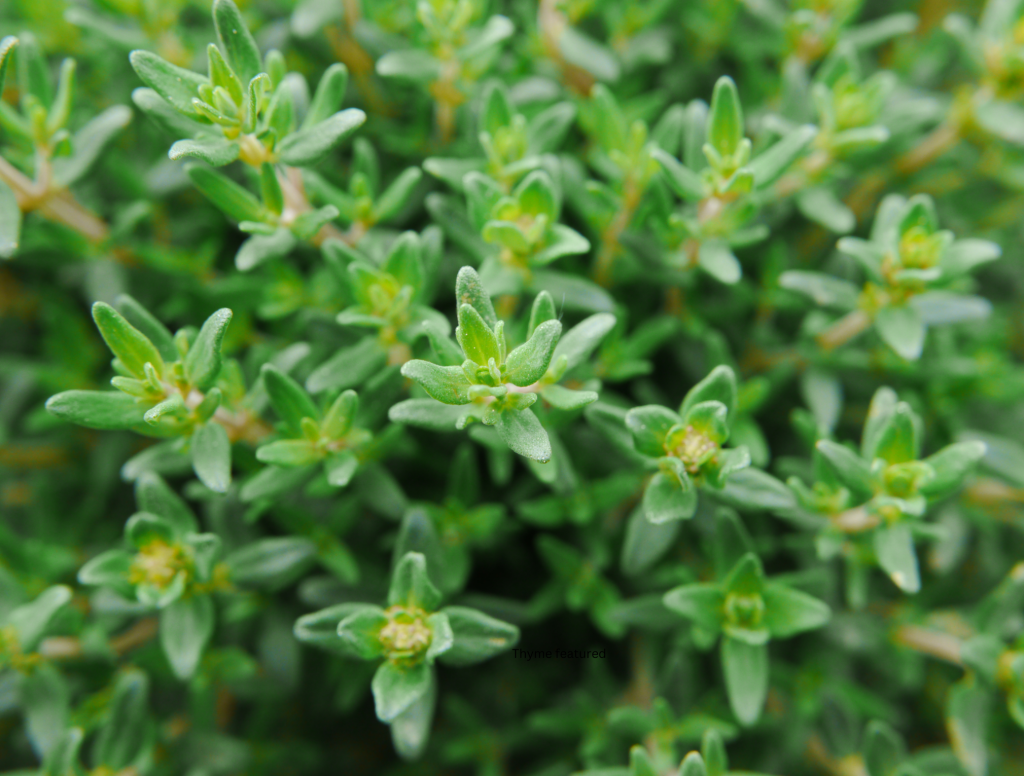
Thyme, an aromatic herb with small, flavorful leaves, is a staple in many kitchens and gardens. Known for its versatility, thyme enhances a variety of dishes, from soups and stews to roasted meats and vegetables. Beyond its culinary uses, thyme is also valued for its ornamental appeal and medicinal properties. If you’re looking to cultivate this delightful herb in your garden or even in a pot on your windowsill, here’s a comprehensive guide on how to grow and care for thyme.
Choosing the Right Variety
There are numerous varieties of thyme, each with its unique characteristics. Common thyme (Thymus vulgaris) is the most widely used culinary variety, while lemon thyme (Thymus x citriodorus) offers a citrusy aroma perfect for seafood dishes. Creeping thyme (Thymus serpyllum) is an excellent ground cover that produces beautiful flowers. Choose a variety that suits your needs and preferences.
Planting Thyme
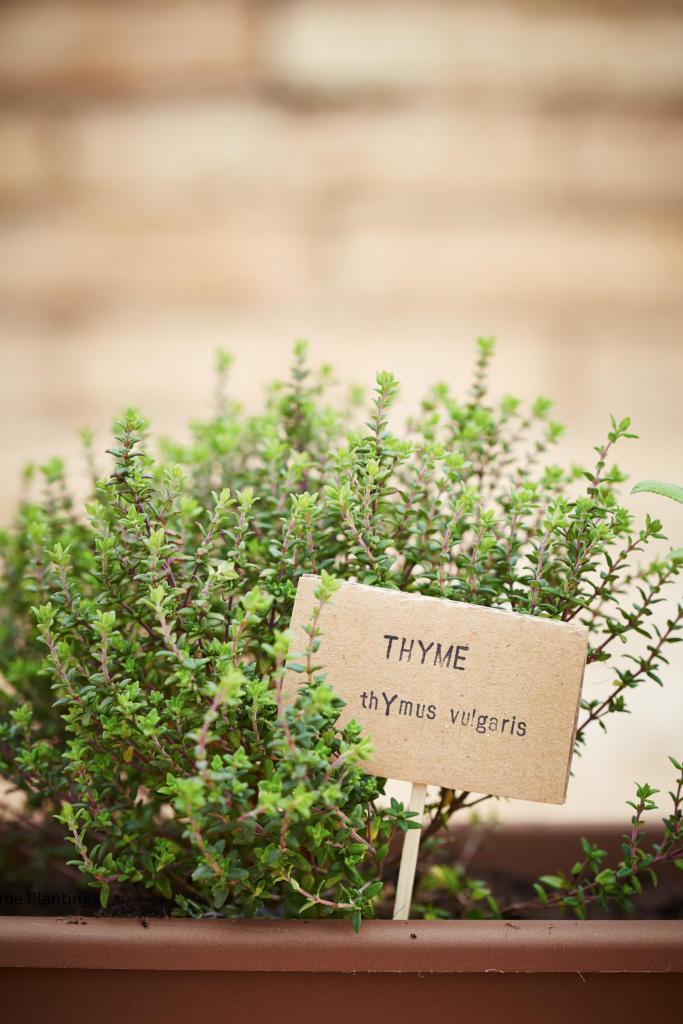
- Location: Thyme thrives in full sun, so choose a spot that receives at least 6-8 hours of sunlight daily. It can tolerate partial shade, but full sun is ideal for robust growth.
- Soil: Thyme prefers well-drained soil with a pH between 6.0 and 8.0. Sandy or loamy soils are best, as thyme doesn’t like to sit in wet soil. Good drainage is crucial to prevent root rot.
- Planting Time: You can plant thyme in the spring after the last frost or in the fall in milder climates. If you’re starting from seeds, sow them indoors 6-10 weeks before the last expected frost date, then transplant the seedlings outdoors when they’re about 3-4 inches tall.
- Spacing: Space thyme plants about 12-24 inches apart to allow for adequate air circulation and growth.
Growing Thyme
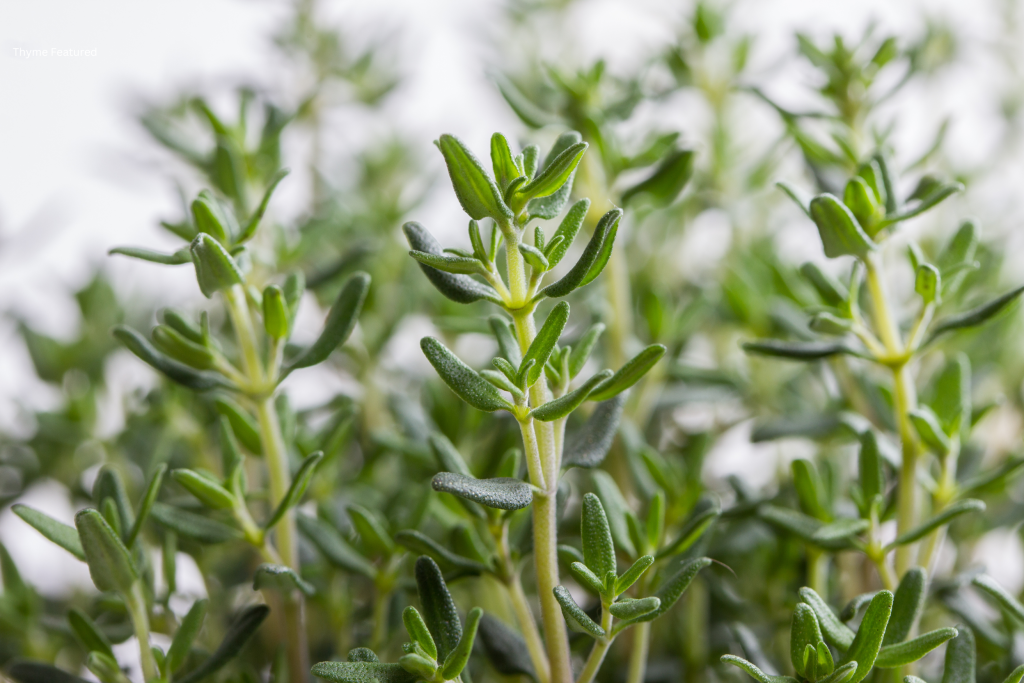
- Watering: Thyme is drought-tolerant and prefers to dry out between waterings. Water the plants deeply but infrequently, allowing the soil to dry out completely before the next watering. Overwatering can lead to root rot and other issues.
- Fertilizing: Thyme is a light feeder and typically doesn’t require much fertilizer. If your soil is poor, you can work in some compost before planting. Alternatively, a balanced, slow-release fertilizer can be applied in the spring.
- Pruning: Regular pruning encourages bushy growth and prevents the plant from becoming woody. Trim the plants back in early spring and after flowering to maintain their shape and vigor.
- Mulching: Mulch around the plants with organic material like straw or shredded leaves to retain moisture, suppress weeds, and improve soil health.
Caring for Thyme
Pest and Disease Control: Thyme is relatively pest-resistant, but it can sometimes attract aphids, spider mites, or whiteflies. Treat infestations with insecticidal soap or neem oil. Proper spacing and good air circulation help prevent fungal diseases like powdery mildew.
Winter Care: Thyme is hardy and can withstand frost, but in colder climates, it benefits from some winter protection. Mulch heavily around the base of the plants, or consider covering them with a cloche or frost cloth during severe cold spells.
Indoor Care: If you’re growing thyme indoors during the winter, ensure it gets enough sunlight by placing it near a bright window. Reduce watering frequency as growth slows down, and avoid overwatering to prevent root rot.
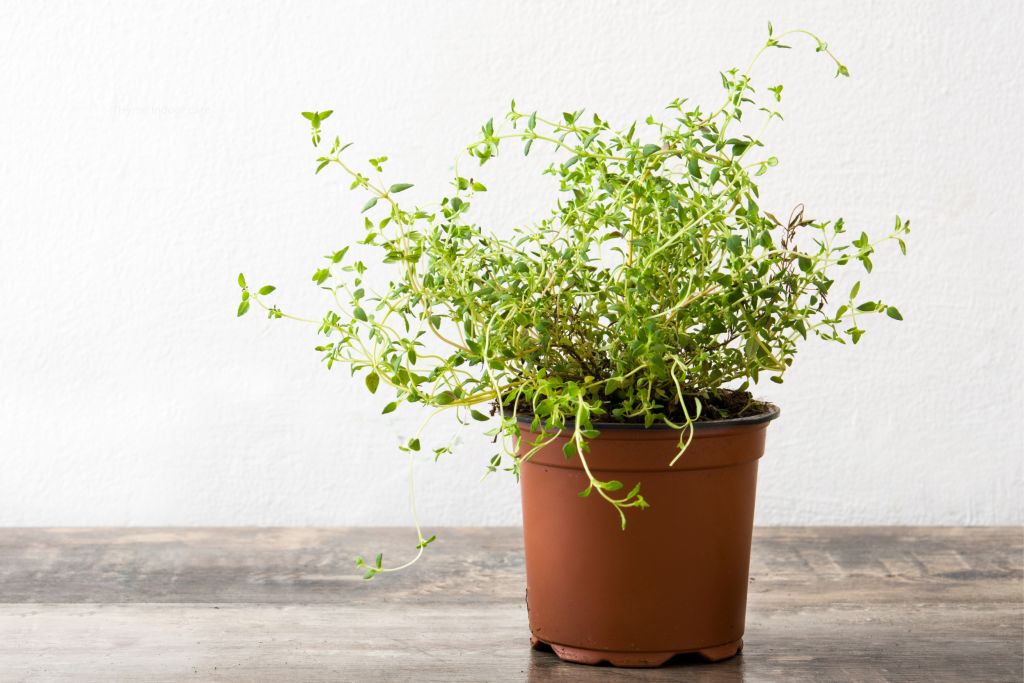
Harvesting Thyme
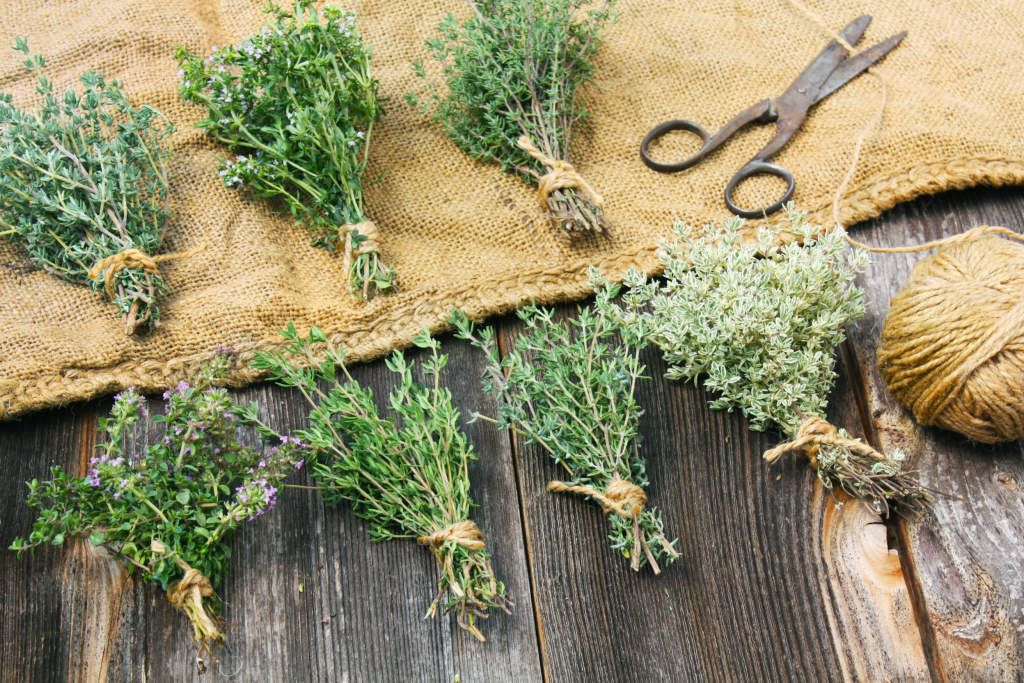
- When to Harvest: You can start harvesting thyme as soon as the plant has enough foliage to maintain growth, usually after it reaches about 6 inches in height. The best time to harvest is in the morning after the dew has dried but before the heat of the day.
- How to Harvest: Use sharp scissors or pruning shears to snip off stems, leaving at least 5 inches of growth to allow the plant to continue thriving. Regular harvesting encourages new growth.
- Drying and Storing: Thyme can be used fresh or dried. To dry thyme, bundle small bunches of stems together and hang them in a well-ventilated area out of direct sunlight. Once dry, strip the leaves from the stems and store them in an airtight container in a cool, dark place.
Conclusion
Growing thyme is a rewarding experience, offering a continuous supply of fresh, aromatic leaves for your culinary and medicinal uses. With its low maintenance requirements and resilience, thyme is an excellent choice for both novice and experienced gardeners. Follow these tips to ensure a healthy, thriving thyme plant that will enhance your garden and your kitchen for years to come.



